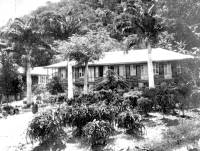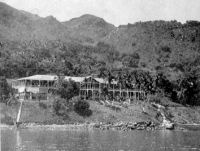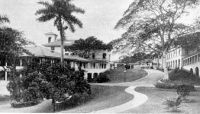The system of socialized medicine in the Panama Canal
In May 1904 after the concluding with the French all negotiations, which allowed the Americans to obtain full control of the building of the Panama Canal, contracting a labor force was a monumental task because of almost insurmountable reasons at that time.
Our country, on the one hand, had become synonymous with scandal, fraud, and corruption as a result of the financial mismanagement that had taken place, as well as the disastrous administration of the first of such companies.
On the other hand, word had been widely disseminated throughout the world that this was an unsanitary, unhealthy, inhospitable place, to which it was difficult to adapt.
Great persuasive skills would then be required, to make it sufficiently attractive for workers from various nations to decide to accept a position with the Company and relocate to Panama. This was true not only for the ranked employees, but also for the most menial labor force, which would be putting out the greatest efforts.
Good salaries, subsidized clothing, housing, and food were important in making this kamikaze adventure at least more enticing. Likewise, free or relatively inexpensive medical care would be added as another inducement in luring them to brave our environment and challenge death.
Inasmuch as disease began to take a notable toll on the labor force, concern for the improvement of patient-care conditions had an immediate response.
In matters of hospital care, the French were far ahead of their times, in the curative as well as the rehabilitative aspects. Not so, however, in the preventive area, which was their catastrophic downfall.
Almost immediately, construction began for a hospital in Colon and another larger and better equipped one known as L’Hôpital Central du Panama, on the outskirts of Cerro Ancón, which had an initial capacity of 500 beds.
 L'Hospital Central Du Panama L'Hospital Central Du Panama1882 - 1904 |
 Colon Hospital Colon Hospital1882 - 1917 |
Additionally, they had the presence of mind to begin setting up first-aid stations in various sites along the railroad route (Gamboa, Paraiso, Bas Obispo, Culebra, Emperador, etc.)
Inasmuch as the number of the sick increased daily and the capacity of the hospital was overflowing, they also built a magnificent rest and convalescent center on the Island of Taboga, which also served to free-up the much-needed beds of the hospitals.
| The Taboga Sanitarium, with its 25 beds, built on a hillside along the sea shore, offered a spectacular view that was conducive to rest and meditation, providing an almost immediate state of well-being to convalescing patients. |  The Taboga Saniarium 1885 - 1914 |
Either the company or private contractors covered the cost of hospital services for the labor force. However, these contractors frequently balked at covering the hospital costs or they would opt for the easier course of firing the worker as soon as it became apparent that he had suffered some type of illness of any consideration, just to save themselves the subsequent expenses.
The French physicians, led by Louis Compagno, were the first with the fortunate foresight to offer this type of socialized health care that Panama was to see.
Similarly, the patients at the Taboga Sanitarium, which was built at a cost of $1,000,000, were getting the best of care. Their hospital stay was covered by the French company, and in certain special cases, by private contractors.
This socialized health care system was adopted by the Americans when they took over the works of the canal in 1904.
 The New Ancon Hospital 1915 - 1928 |
Over $200,000 were invested in the new French hospital for expansion
and equipment renewal.
The Ancon Hospital came into being with 1,500 beds, the best scientific center outside of the United States. Similarly, they adopted the idea of the Taboga Sanitarium, remodeled it and continued to offer an acceptable level of care. |
| In 1907, the Palo Seco Hospital was opened for leper patients who had first been placed on Taboga and later interned on a separate wing of the Ancon Hospital. The Government of the Republic of Panama paid 75 cents a day for each of their citizens admitted there. |  Palo Seco Hospital |
The socialized concept of health care that was present during the construction of the canal remains in effect up to this day at the Gorgas and Coco Solo Hospitals, and worked perfectly well within the reigning capitalist system.
The degree of medical care offered by the Ancon Hospital was compared very favorably to those of the best medical centers in the world, not only for their up-to-date equipment and surgical instruments at the time, but also for the devotion and degree to which the medical and paramedical staff were identified with the task to be undertaken.